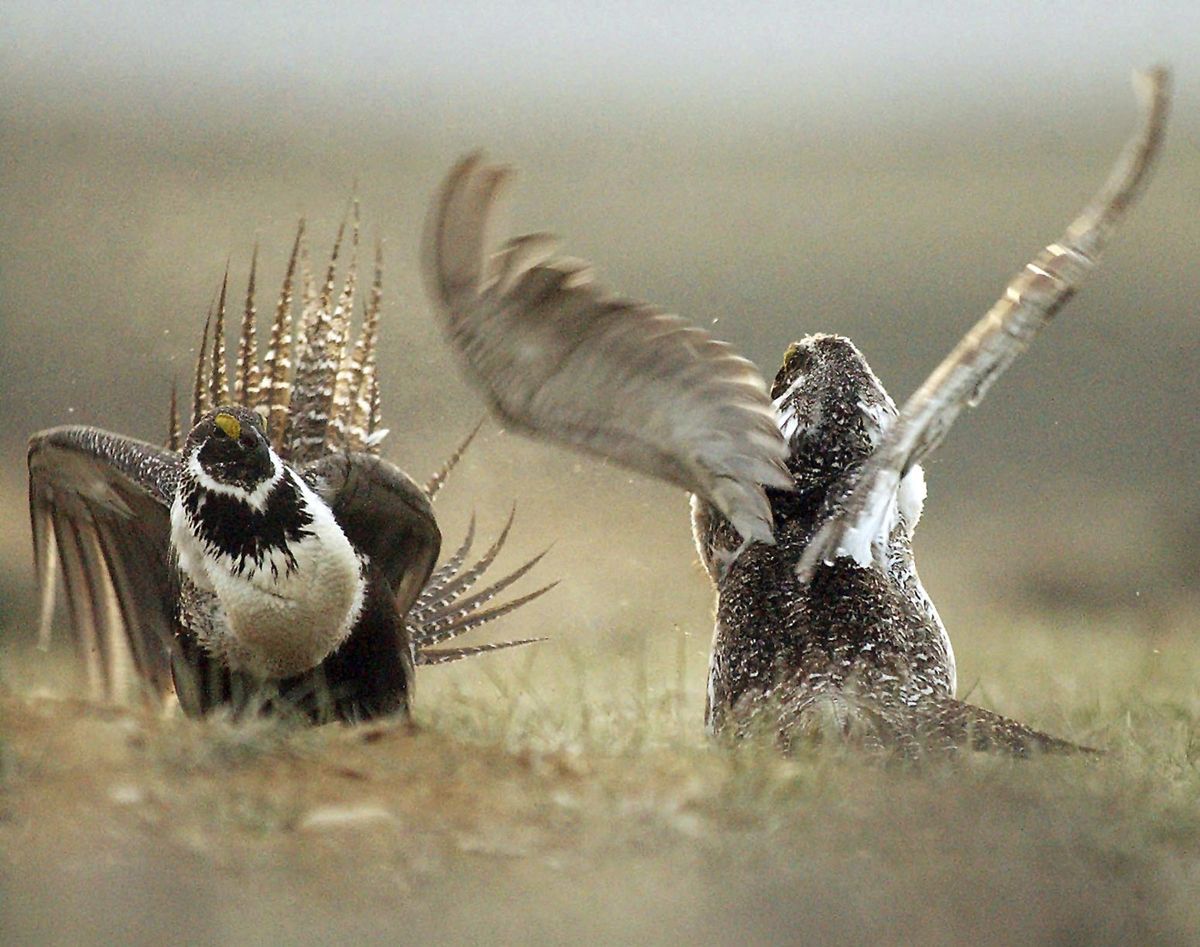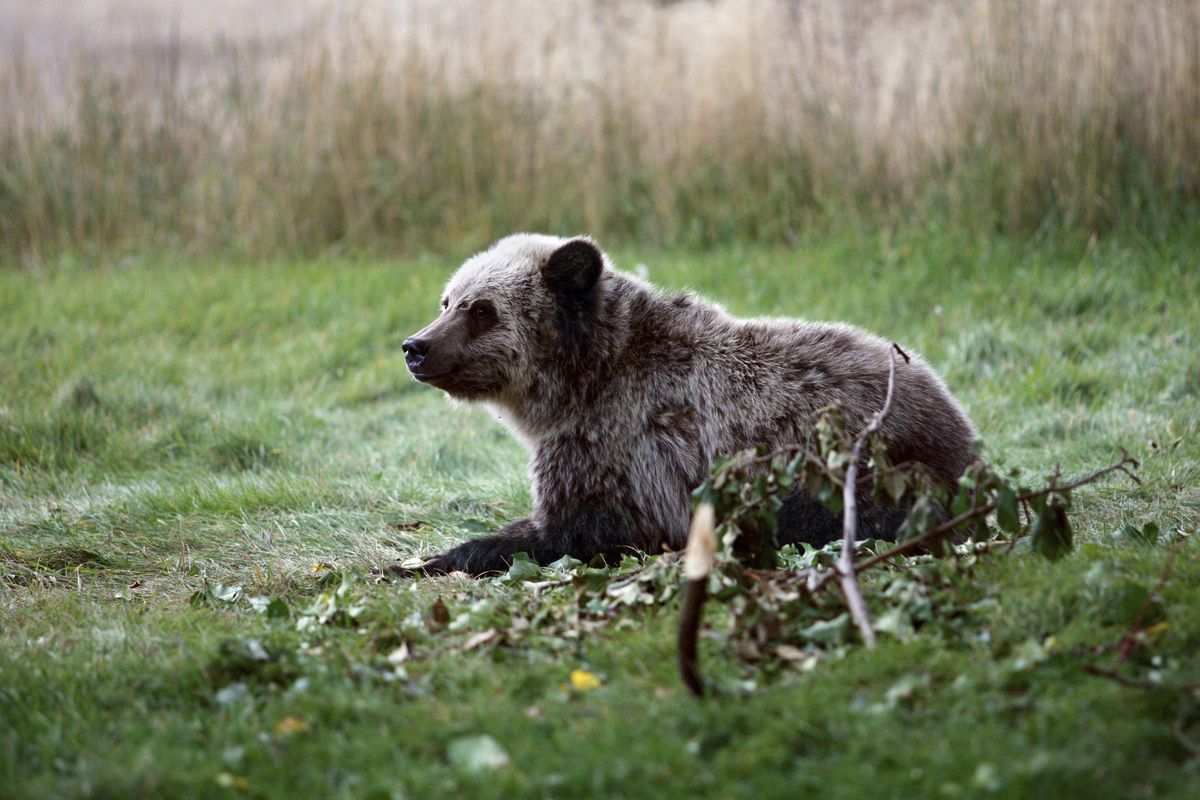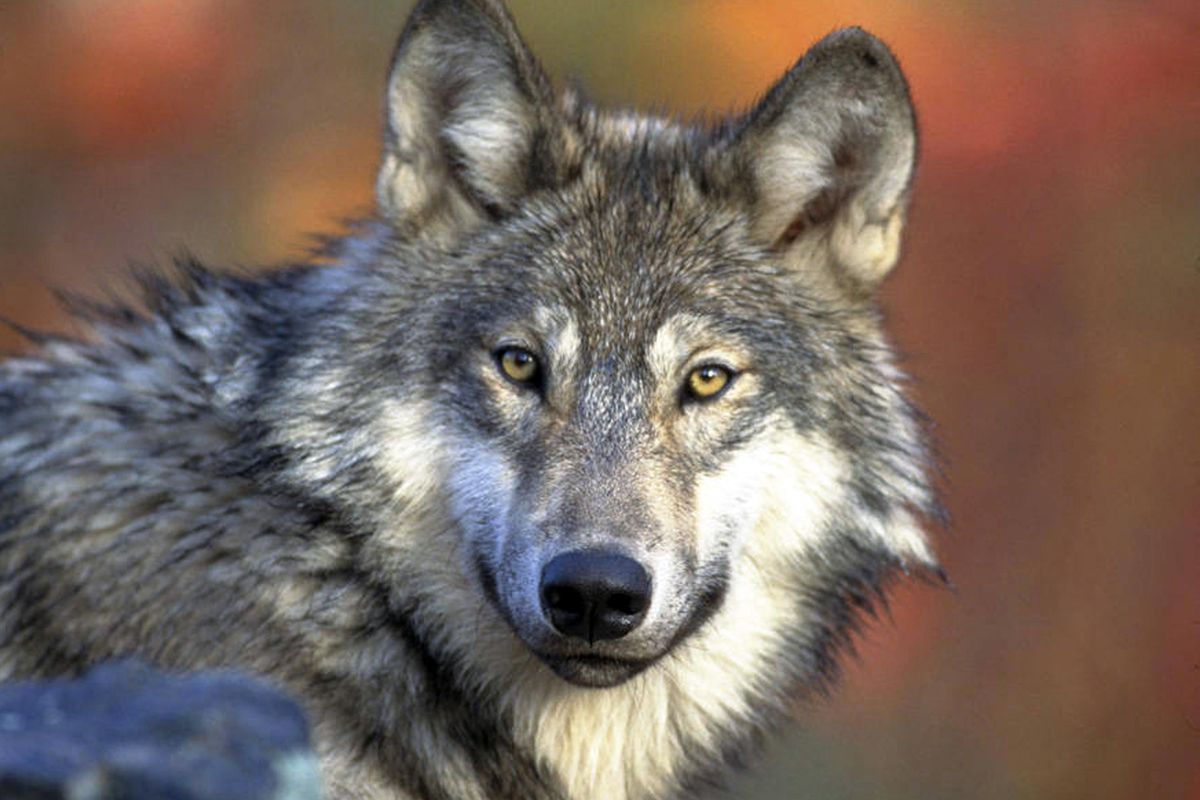Changes coming to the Endangered Species Act will impact Idaho wildlife
FILE - This April 18, 2008 file photo provided by the U.S. Fish and Wildlife shows a grey wolf. A federal report says gray wolves killed a record number of livestock in Wyoming in 2016, and wildlife managers responded by killing a record number of wolves that were responsible. The report released by the U.S. Fish and Wildlife Service found that wolves killed 243 livestock, including one horse, in 2016 in Wyoming. As a result, wildlife managers last year killed 113 wolves that were confirmed to be attacking livestock. (AP Photo/U.S. Fish and Wildlife Service, Gary Kramer, File) ORG XMIT: LA112 (Gary Kramer / AP)
It’s a hugely significant piece of legislation for Idaho, where the greater sage grouse, the Yellowstone grizzly, the gray wolf and many other species have either been listed or considered for listing under the act.
First enacted in the 1973, the Endangered Species Act has been behind the preservation and recovery of several iconic species, including the bald eagle.
The changes have been brewing for a long time, pushed by Western governors, congressional Republicans and interest groups in the agricultural and energy sectors, who object to the act’s effects on economic development and resource extraction.
Proposals that didn’t have a shot under previous administrations got a second wind after the election of Donald Trump and his appointment of Ryan Zinke as Secretary of the Interior. Last year, a raft of bills was introduced in the House Natural Resources Committee, where chairman Rep. Rob Bishop, R-Utah, declared flatly that the “Endangered Species Act doesn’t work.”
The congressional bills haven’t moved forward. In the meantime, the Trump administration took the dramatic step of issuing a new set of proposed rules for implementing and enforcing the Endangered Species Act.
Among other changes, some of which originated with those bills, the rules would make it so Endangered Species Act protections don’t automatically apply to species designated as “threatened,” as has happened in the past. In certain cases, the Department of the Interior would develop estimates of the economic impact of designated areas as critical habitat for endangered species, instead of following past rules of putting sole focus on the role of habitat in supporting endangered populations.
Environmental groups have decried the move as “gutting” the Endangered Species Act.
“It’s very insidious,” said Noah Greenwald, endangered species director of the Center for Biological Diversity. “It’s a targeted missile to seriously weaken the protections for endanger species.”
But groups such as the Idaho Farm Bureau Federation see relief from the burdens of regulation.
“The Endangered Species Act is clearly flawed,” said Sean Ellis, a spokesman for the group. “… Farmers support protecting wildlife, of course they do. But farmers are also disproportionately impacted.”
The sixth mass extinction
The changes come as scientists have found clear evidence that the reduction in biodiversity across the planet is proceeding at a pace that has happened only a handful of times in the roughly 4 billion years life has existed on Earth.
The expansion of humans throughout the world has driven a vast number of extinctions, particularly since the Industrial Revolution. It’s such a large wave of extinctions that paleontologists have given it a name: the Holocene or Anthropocene extinction.
A 2015 scientific paper published in Science Advances found that, even using conservative assumptions, the current rate of species extinction is about 100 times the natural rate. It would have taken between 800 and 10,000 years under the natural extinction rate to match the extinctions of the past century.
The statistical analysis lent support, the scientists found, to a startling but increasingly widely accepted thesis.
“These estimates reveal an exceptionally rapid loss of biodiversity over the last few centuries, indicating that a sixth mass extinction is already under way,” the authors wrote.
By a sixth mass extinction, the authors meant that the level of extinctions presently driven by humans is similar to events such as the impact of an asteroid on the Yucatan Peninsula 66 million years ago that wiped out the dinosaurs. Three-quarters of species on Earth were wiped out in that event, and the study suggests on the current course a similar number of extinctions can be expected from human expansion.
The southern Rocky Mountain wolf, which once roamed the local region, was driven to extinction in 1935, shortly before the extinction of the Cascade mountain wolf in 1940. The California grizzly disappeared in 1922, the Mexican grizzly in 1964. The eastern cougar was recently declared extinct, though it’s unknown how long ago the extinction took place. The eastern and Merriam’s elk each disappeared around the turn of the 20th century. The Carolina parakeet, a parrot-like bird that once inhabited the southeastern U.S., went extinct in 1920.
A 2011 paper published in Nature noted that it usually takes hundreds of thousands of years of evolution for a distinct species to emerge. Because it takes so long for new species to develop, the level of biodiversity on earth will be reduced for thousands of years.
Creating the
Endangered Species Act
It was the reduction in passenger pigeon numbers in the late 1800s that led to the first efforts to create a law aimed at preserving disappearing species, the Lacey Act. By the early 1900s, the bird was already extinct.
A variety of previous, similar acts were adopted over succeeding decades, including efforts to bolster the population of the nation’s official bird, the bald eagle, which was on the verge of disappearing. But President Richard Nixon declared that the series of laws had been too mild to be effective and called for Congress to develop a more comprehensive law.
“Starting with our national symbol, the bald eagle, we have expanded our concern over the extinction of these animals to include the present list of over 100,” he wrote in 1972. “We have already found, however, that even the most recent act to protect endangered species, which dates only from 1969, simply does not provide the kind of management tools needed to act early enough to save a vanishing species. … I propose legislation to provide for early identification and protection of endangered species.”
The following year, Congress passed the Endangered Species Act, which would form the bedrock of species protection in the U.S. for the next half-century and serve as a model for similar efforts in other countries.
According to the U.S. Fish and Wildlife Service, about 99 percent of species that have gained protection under the Endangered Species Act haven’t gone extinct. Several iconic species, from the bald eagle to the American alligator, have recovered to the point where they’re now considered safe from the threat of extinction. To conservationists, that’s a resounding success. But Endangered Species Act critics see the situation differently.
How well does the
Endangered Species Act work?
Endangered Species Act critics look at the same data and see a failure. Ellis argued that the Endangered Species Act’s record is “less than stellar,” with only 5 percent of species listed as endangered having recovered to the point of delisting so far.
“That sounds like a death sentence to me, to be listed on that list,” Ellis said.
But independent scientific reviews have found the act is effective. A 2005 systematic analysis published in BioScience noted that using the number of species that had been delisted was a poor measure of success, since on average a species had only been on the list for about 16 years, not enough time to recover. It also noted that using the number of species that hadn’t gone extinct as a measure of success, as some environmental groups do, is a poor measure because it doesn’t indicate whether a species is improving or getting worse.
Using a better measure, the review found that the Endangered Species Act was effective in promoting species recovery. Being listed as a threatened or endangered species tended to cause the population of animals to grow, and the longer a species had been listed the more likely it was to improve.
Further improvements were seen if critical habitat was designated for a species compared to listed species without listed critical habitat. The development of dedicated recovery plans also improved outcomes for endangered species, though recovery plans dealing with multiple species were less effective. Listing a species early on in its population decline also improved outcomes.
“Our findings suggest that the Endangered Species Act is effective and can be improved by prompt listing, protection of critical habitat, and dedicated recovery plans,” the authors wrote.
What will the changes do?
The outlined changes proposed by the Trump administration haven’t been finalized, and public comment is still being accepted. Among them, the rules will:
- Allow for the inclusion of estimates of the economic impact of listing a species.
- Allow federal agencies to wait longer before declaring that a species is threatened.
- Limit criteria for species recovery to those adopted when a species was listed, even if science has changed.
- Make it easier for agencies to determine that it isn’t necessary to designate a species’ critical habitat.
- Eliminate the automatic extension of Endangered Species Act protections.
Some have cast the changes as improvements to the Endangered Species Act. But the White House has justified them in official documents as a response to Executive Order 13771, one of Trump’s first executive orders calling for reduction of regulation.
Wildlife advocates say endangered species will pay the cost.
“The statute makes clear that listing decisions are made solely on the basis of the best available science,” Greenwald said. “It’s inconsistent with the statute, and it doesn’t make sense. How do you measure that – short-term economic impacts against the disappearance of a species? … It will turn every listing decision into a political circus, more than they already are.”
One bill, with provisions that haven’t been included in the Trump Administration’s proposed rule changes, is found in the LOCAL Act sponsored by Rep. Scott Tipton, R-Colo. That bill would create a variety of incentives, including about $41 million per year for the next five years, for farmers and other landowners to engage in habitat protection efforts on their own land. Similar measures have been backed by the Idaho Farm Bureau Federation and the Western Governors’ Association.
“We believe farmers and ranchers should be part of the solution,” Ellis said.
Kathy Rinaldi of the Greater Yellowstone Coalition, which has worked to preserve grizzlies in the Greater Yellowstone Ecosystem, said a key to improving the performance of the Endangered Species Act – one that has also been backed by the Western Governors’ Association but isn’t included in the administration’s rules – is a greater level of funding for species protection.
“The current act allows a lot of flexibility,” Rinaldi said. “Instead of making these changes, they should fully fund the Endangered Species Act”


